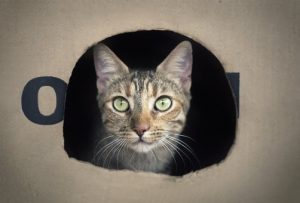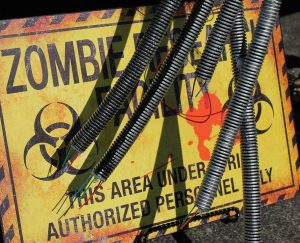By Leonie Schittenhelm

Forgotten your password yet again? Jamming the keys harder and harder with every try even though you have tried this one three times already? Only to finally (your keyboard breathes a sigh of relief) give in and request a new password. If you have been there, don’t worry – it might just be how tired you were last Thursday.
Researchers at the School of Computing Science at Newcastle University are interested in finding out how a user’s personality traits and other factors influence how they choose passwords as well as the likelihood of successfully remembering them. To do this they asked 100 non-computer science students to create a password, which they had to recall to access a login one week later. The catch? Half of the students had to complete a cognitively exhausting task immediately before thinking up a password. The results were clear: the more mentally exhausted a participant was at time of password creation, the less likely they were to remember it the following week.
But the study, cheekily called ‘Why Johnny Cannot Remember His Password – An Empirical Investigation’, didn’t stop there. They also tested participants for common personally traits, and assessed password strength as well as if this particular password had been used by the student in another context before. Interestingly people who scored high in terms of agreeableness – a personal trait associated with kindness towards other people and compliance with rules – were the most likely to choose a completely new password. This could suggest that the nagging e-mails about cyber security do work, but possibly only on the people already receptive to these kinds of messages. Male participants were four times more likely to choose a completely new password, but this came at the cost of remembering it the following week, which was only at about 50%. Another surprise? There does not actually seem to be very much difference between the difficulty to remember a weak or a strong password.
So when you choose your next password, remember to do it when well-rested and don’t be afraid to choose something quite long. I personally might keep a little note of it in a safe place – at least until the following week…
 Rheology is a field that is primarily concerned with the flow of matter, both in liquid and solid state. The author of this paper, M.A. Fardin, charmingly argues that cats can behave in different ways depending on the surface they are lying on and the space they are trying to manoeuvre themselves into. His methodology? ‘1. Bring an empty box. 2. Wait.’
Rheology is a field that is primarily concerned with the flow of matter, both in liquid and solid state. The author of this paper, M.A. Fardin, charmingly argues that cats can behave in different ways depending on the surface they are lying on and the space they are trying to manoeuvre themselves into. His methodology? ‘1. Bring an empty box. 2. Wait.’ Modelling how quickly and widely infectious diseases can be transmitted is a complex mathematical undertaking but immensely valuable for disease management. But how can you teach these complex mathematical skills to students without scaring them off? Simple answer: Zombies!
Modelling how quickly and widely infectious diseases can be transmitted is a complex mathematical undertaking but immensely valuable for disease management. But how can you teach these complex mathematical skills to students without scaring them off? Simple answer: Zombies! A classic in the world of scientific questions no one has even thought of asking before. This study first asked adults to label children’s paintings as either ‘bad/ugly’ or ‘good/beautiful’ and then tried to teach the distinction to pigeons – with surprising successes! Pigeons can apparently learn what is considered beautiful to human eyes and use both colour and pattern of the paintings to come to their assessment.
A classic in the world of scientific questions no one has even thought of asking before. This study first asked adults to label children’s paintings as either ‘bad/ugly’ or ‘good/beautiful’ and then tried to teach the distinction to pigeons – with surprising successes! Pigeons can apparently learn what is considered beautiful to human eyes and use both colour and pattern of the paintings to come to their assessment.




 https://pixabay.com/en/lego-doll-the-per-amphitheatre-1044891/
https://pixabay.com/en/lego-doll-the-per-amphitheatre-1044891/




